
eBook - ePub
Toronto Sketches 4
The Way We Were
Mike Filey
This is a test
Share book
- 224 pages
- English
- ePUB (mobile friendly)
- Available on iOS & Android
eBook - ePub
Toronto Sketches 4
The Way We Were
Mike Filey
Book details
Book preview
Table of contents
Citations
About This Book
Mike Filey's "The Way We Were" column in the Toronto Sun continues to be one of the paper's most popular features. In Toronto Sketches 4, the fourth volume in Dundurn Press's Toronto Sketches series, Filey brings together some of the best of his columns.
Each column looks at Toronto as it was, and contributes to our understanding of how Toronto became what it is. Illustrated with photographs of the city's people and places of the past, Toronto Sketches is a nostalgic journey for the long-time Torontonian, and a voyage of discovery for the newcomer.
Frequently asked questions
How do I cancel my subscription?
Can/how do I download books?
At the moment all of our mobile-responsive ePub books are available to download via the app. Most of our PDFs are also available to download and we're working on making the final remaining ones downloadable now. Learn more here.
What is the difference between the pricing plans?
Both plans give you full access to the library and all of Perlego’s features. The only differences are the price and subscription period: With the annual plan you’ll save around 30% compared to 12 months on the monthly plan.
What is Perlego?
We are an online textbook subscription service, where you can get access to an entire online library for less than the price of a single book per month. With over 1 million books across 1000+ topics, we’ve got you covered! Learn more here.
Do you support text-to-speech?
Look out for the read-aloud symbol on your next book to see if you can listen to it. The read-aloud tool reads text aloud for you, highlighting the text as it is being read. You can pause it, speed it up and slow it down. Learn more here.
Is Toronto Sketches 4 an online PDF/ePUB?
Yes, you can access Toronto Sketches 4 by Mike Filey in PDF and/or ePUB format, as well as other popular books in History & Social History. We have over one million books available in our catalogue for you to explore.
Information
RINGING IN 1946
January 1, 1995
Last week I wrote about the Christmas of 1944 and how for the first time since the outbreak of war five years earlier Torontonians could finally celebrate the festive season with increased hope that the Allies would soon be victorious. Those hopes were realized in May and August 1945 with the signing of treaties with Germany and Japan that formally ended the Second World War. With the world at peace for the first time in six years, New Year’s Eve celebrations fifty years ago this year were sure to be special.
• • •
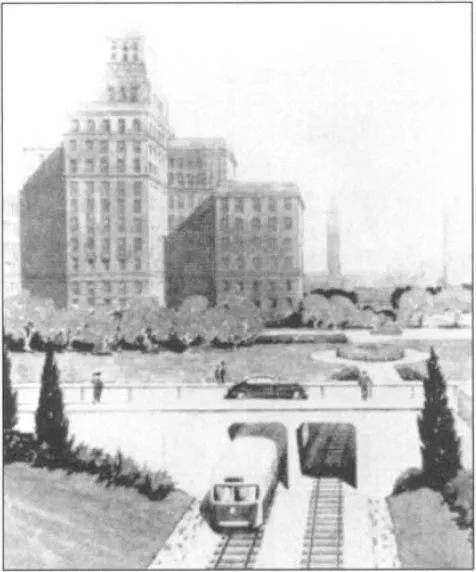
Artist’s depiction of the Queen streetcar subway. In the background is the Canada Life Building on University Avenue.
One thing this city didn’t lack a half-century ago were places to ring in the New Year. Whether it was dinner and dancing at the plush Royal York or King Edward hotels, the Old Mill (where they still have supper dancing) or the Savarin on Bay Street, or perhaps a less extravagant night out at one of the city’s many dance halls; the Palais Royale at Sunnyside, the Queensway Ballroom in Etobicoke Township at the mouth of the Humber (eventually renamed the Palace Pier), the Club Kingsway on the Kingsway just north of the Lakeshore and backing on the Humber (it started off as the Silver Slipper), the Masonic Temple at Yonge and Davenport, Columbus Hall on Sherbourne, the list is almost endless. And of course, we mustn’t neglect to mention what was, arguably, the most popular “dancehall” of them all, Casa Loma.
With tickets available for six dollars per couple, hats, horns, novelties, and prizes included, visitors eager to greet 1946 in the splendor of Sir Henry Pellatt’s “castle on the hill” would be hosted by Art Hallman who, as the newspaper ad described him, was “Canada’s sensational new maestro.” Art, who passed away last December 5, was starting out on his own having spent many years with the Mart Kenney organization. Art was to become one of this city’s most popular band leaders and a good friend.
A list of some of the other fellows fronting big bands in Toronto fifty years ago would include Stan Porch, Ellis McLintock, Jack Evans, Trump Davidson, Eddie Stroud, Ferde Mowry, Bert Niosi and, who’ll ever forget, George Wade and his Corn Huskers.
After climbing into bed following a night of festivities, citizens were expected to go out and vote the next day, Monday, January 1, for the new year’s municipal council. The mayor for 1946, and returned by acclamation, was Robert Saunders, with Messrs. McCallum, Smith, Balfour, and McKellar as members of the Board of Control. Other now familiar names on the 1946 City of Toronto council were Aldermen Nathan Phillips and somebody named Allan Lamport. Both of these gentlemen would go on to serve as Toronto mayors.
Major municipal projects well under way as the new year dawned included construction of the Clifton Road extension connecting Mt. Pleasant Road (that ended at St. Clair) with Bloor Street and detailed planning for the Don Valley Roadway. The former we know today as the Mt. Pleasant extension; the latter, in a much altered form, the Don Valley Parkway, the first part of which didn’t open until 1963.
As 1946 arrived heated discussions between the city and the federal government continued over the amount of money owed to Toronto following the government’s expropriation of a parcel of land for a new Postal Delivery Building at the northwest corner of Fleet and Bay streets That’s the building now being eyed by the Raptors basketball team owners. Incidentally, on January 16, 1946, Toronto sports fans witnessed a basketball game between the world’s professional champion teams, the Fort Worth Zollners, and the Rochester Royals, played at the Gardens where the top ticket price was two dollars. Who said pro basketball is new to Toronto?
Staff working in the TTC’s Rapid Transit Department had New Year’s day 1946 off, but was back to the drawing board the next day as work progressed on the development of a pair of new subway lines for the increasing numbers of Toronto commuters. The Yonge line opened in early 1954, the Queen route was abandoned.
Those subways were years in the future and in the meantime the TTC relied on lots of streetcars (968 in 1946, to be exact) to do the job. Always on the lookout for innovative new technology, the Commission was also preparing to introduce a new form of transit vehicle, the trolley bus, the first of which would enter service on the Lansdowne route in 1947.
While on the subject of the TTC, transit riders off to vote that January 1, 1946, could purchase four tickets for twenty-five cents or simply drop seven cents into the fare box. Oh, that loaf of bread you were asked to pick up on the way home.
One other “so what’s new” story from fifty years ago. Early in 1946, the Bell Telephone Company was experimenting with mobile-radio telephones. Today they’re called car phones.
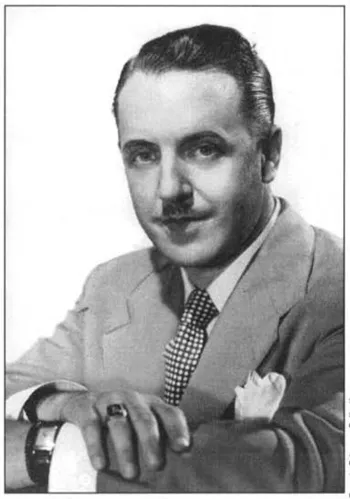
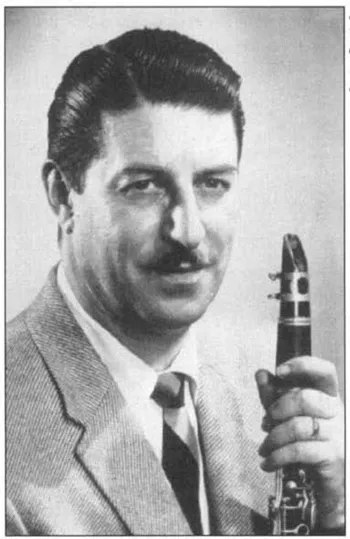
Courtesy Toronto Sun, Toronto Telegram Collection.
Big band leaders Art Hallman (top) and Bert Niosi were busy on New Year’s Eve, 1944.
LINK TO THE PAST
January 8, 1995
Soaring over both the Don Valley Parkway and Bayview Avenue Extension just to the east of the abandoned Don Valley brickyard is the imposing CPR ‘half-mile bridge,’ the construction of which some sixty-six years ago was regarded by experts as unparalleled in North American railway history. Today, this engineering marvel is all but invisible to the thousands of motorists who travel under its seventy-five-foot-high piers.
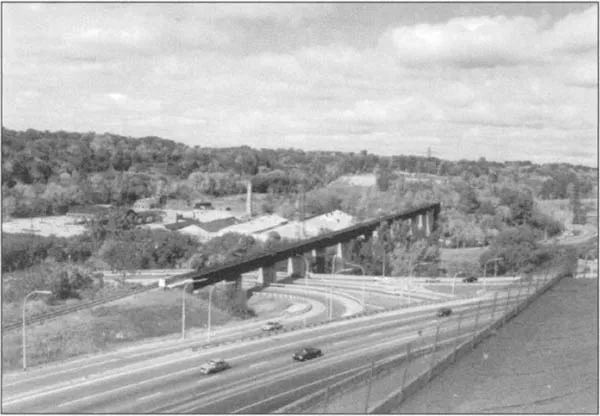
Same view, 1995. Note Don Valley Parkway in foreground, Bayview Avenue Extension and DVP connectors under the bridge, and abandoned brickyard (only the “Valley” chimney remains) in background.
When the Canadian Pacific Railway officially came into being in 1881 and for many years after, it had no direct route into downtown Toronto. In a manoeuvre that was to correct that situation, in 1882 the CPR acquired the Ontario and Quebec Railway whose tracks skirted Toronto well to the north. (This east-west right-of-way is still very much in use, though the city’s growth now puts the route almost through the middle of the much-expanded city.) A few years later a line was built from the former O & Q tracks down the Don Valley finally giving the CPR its much coveted connection with the city’s busy waterfront.
One of the bridges the railway was forced to build on its route towards the waterfront was erected high over the Don River flowing swiftly in the valley just west of Todmorden, a small community that developed near the present Pottery Road/Broadview Avenue intersection.
This bridge was 1,150 feet in length with its single-track bed supported by more than a dozen seventy-five-foot-high, A-shaped steel piers. For the next four decades, hundreds of Toronto–Montreal freight and passenger trains soared over the Don Valley on what had become known, for some reason, as the half-mile bridge (though my high school math tells me that the term quarter-mile would have been closer to the mathematical truth).
As passenger and freight equipment increased in both size and weight it eventually became necessary for the CPR to rebuild several of the bridges on their Toronto–Montreal route. When designing these new structures another fact had to be taken into consideration.

“Half-mile” railway bridge over the Don Valley just before its replacement in 1928. Note lightweight construction and spindly steel piers. The busy Don Valley brickyard, with four chimneys, in left background.
While the modern diesel-type locomotive was beginning to enter service on lines south of the border, Canadian Pacific’s motive power experts still believed that the semi-streamlined steam locomotive was the way of the future. It was believed that the streamlining would reduce head-end resistance thereby increasing efficiency and speed.
CPR staff then set out to design a new steam locomotive to fulfill these beliefs. The first of this new F2a Jubilee class of locomotives, number 3000, would have a 4-8-4 wheel arrangement with eighty-inch drivers and operate under 300 psi boiler pressure. (As it turned out only five of this class were ever built and they were less than a total success. Number 3000, which didn’t enter service until mid-1936, is in the National Museum of Science & Technology in Ottawa.)
The railway’s Ontario District engineering staff were fully aware of the planned upgrading of the rolling stock as they set out to replace the old half-mile bridge with a new more substantial structure. As plans evolved, of paramount concern was the fact that the busy Montreal–Toronto line would not be closed down.
In a move that would make railway history, it was decided to assemble the new bridge in-line with old structure replacing the lighter-weight sections with the new, more massive segments one after the other, all the while keeping the line over the valley in service. The time available each day to work on the removal/replacement phase was just seven hours, the interval between the morning and evening Toronto–Montreal trains. (Because the work was going on seventy-five feet in the air, no work was possible on days when high winds prevailed.)
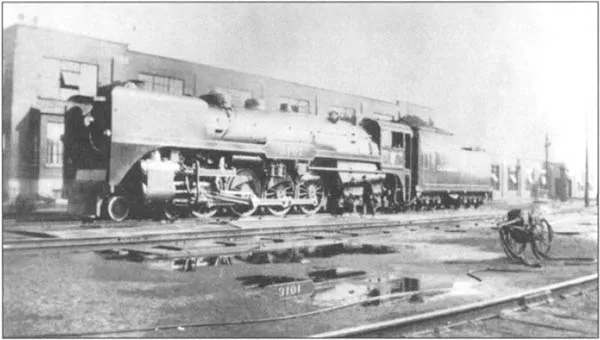
Courtesy David Monahan, National Museum of Science & Technology.
CPR’s new number 3101 locomotive at the John Street roundhouse.
The thirteen new segments would rest on towering concrete piers, with the pouring of the first commencing on May 1, 1928.
Each day, following the passage of the morning train (and weather permitting), workers unbolted a section of the old bridge after which a crane would lift it (and the supporting pier) out of the way. Then a second specially designed crane moved a new pre-assembled section into place where it was supported on a new concrete pier.
New rails and ties were laid, bolted down, and connected to the old rail. The bridge was then cleared of workers just in time for the evening train to rumble by. The interval ...